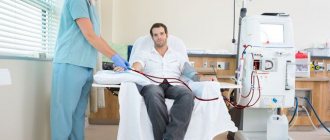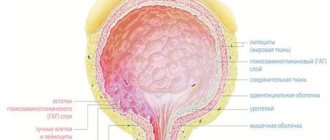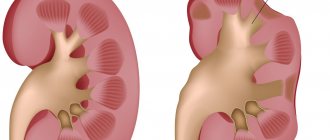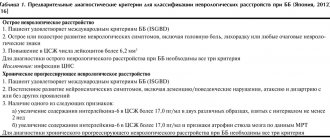The kidneys are paired bean-shaped organs located in the retroperitoneum, on either side of the spine. The main function of the kidneys is urine formation, which ensures the removal of fluid and water-soluble elements from the body - the end products of metabolism.
The most common kidney diseases are:
- pyelonephritis;
- urolithiasis disease;
- renal failure;
- prolapse of the kidney (nephroptosis);
- hydronephrosis;
- tumors;
- diabetic nephropathy, etc.
Symptoms and complications of pyelonephritis
Pyelonephritis is a lesion of one (unilateral) or both kidneys (bilateral) of infectious origin, usually accompanied by the following manifestations:
- rise in temperature, chills;
- nausea, vomiting;
- aching pain in the side or lower back;
- general weakness, fatigue;
- frequent urination.
There are two ways of contracting pyelonephritis:
- Ascending, in which pyelonephritis develops as a complication of an infectious process in other organs of the genitourinary system - urethritis, cystitis or prostatitis. Fixed in the vast majority of cases.
- Descending, in which the infection enters the renal tissue hematogenously - with blood flow from the source of inflammation in another place, is much less common.
Untreated unilateral pyelonephritis can eventually develop into a bilateral one - when both kidneys are affected, and also provoke the development of an inflammatory process in other organs, cause irreversible changes in the structure of the kidneys, the formation of calculi (stones), renal failure and other complications, therefore, if you suspect pyelonephritis, you should consult a doctor immediately.
Where do acquired kidney diseases come from?
The kidneys bear a tremendous burden. In an adult, they pass about 120-200 liters of fluid daily. The organ has a large margin of safety, is resistant to infections and inflammation, but sometimes a person, unknowingly, causes harm and disrupts the functioning of the kidneys.
Many diseases are asymptomatic, so preventive medical examinations should not be ignored even if you feel well. Pain syndrome appears much later, when the disease becomes chronic and changes the functional abilities of the organ. Drugs cause a serious blow to kidney health. This is especially true for self-medication, when the patient takes medications on his own without first consulting a doctor.
According to statistics, only 40% of people with respiratory viral diseases go to medical institutions, and then mainly to apply for sick leave. The remaining 60% self-medicate based on the advice of friends and online recommendations.
However, a number of medications provoke the development of kidney diseases in a completely healthy person. Moreover, these are not some special drugs, but tablets that are available in every person’s home medicine cabinet.
Diagnosis and treatment of pyelonephritis
To diagnose pyelonephritis, a bacterial culture of urine is needed to determine the sensitivity of the infectious agent to antibacterial drugs, since pyelonephritis is caused by different strains of microorganisms that react differently to antibacterial drugs.
In addition to bacteriological analysis, the main diagnostic methods include blood and urine analysis, as well as ultrasound of the kidneys to identify stones, tumors, the position of the kidney and diagnose the condition of blood vessels. Based on the examination results, the doctor selects the optimal antibacterial agents, which are the basis for the treatment of pyelonephritis.
Glomerulonephritis
This disease is autoimmune. This means that the body's own immune system produces antibodies that damage the glomeruli. As a rule, both kidneys are affected, which is due to the systemic nature of this disease.
Glomerulonephritis is quite often asymptomatic; it can only be detected by altered tests or ultrasound data. Therefore, you should not neglect routine medical examinations, especially if you have a family history of the kidneys.
An infectious theory of the development of this disease is also possible. Some strains of streptococcus, hepatitis B and C viruses, and HIV infection can cause glomerulonephritis. Women suffer from glomerulonephritis much more often than men.
There are acute and chronic forms of this disease.
Symptoms of the disease
- Edema is the most common symptom of glomerulonephritis, occurring in 85% of patients. Swelling is especially pronounced on the face.
- Increased blood pressure (unstable blood pressure).
- Discoloration of urine red due to the ingress of red blood cells. In some cases, the urine may be very dark.
- Decrease in the volume of urine excreted.
- Dull pain in the lower back.
- Nonspecific symptoms: general weakness, headache.
Diagnostics
- In a general urine analysis: the presence of protein, red blood cells, casts, renal tubular epithelial cells, leukocytes, increased specific gravity.
- Increased levels of creatinine and cholesterol in the blood, decrease in total protein.
- Increased content of circulating immune complexes in the blood.
- Decreased glomerular filtration rate.
- The presence of antistreptococcal antibodies in the blood (usually in this case, glomerulonephritis is preceded by frequent sore throats).
- The main method for diagnosing glomerulonephritis is a biopsy of kidney tissue with further histological examination. It is on the basis of this diagnostic method that a final diagnosis can be made and the morphological nature of glomerulonephritis can be determined.
Treatment
It is necessary to limit fluid and salt intake.
Glomerulonephritis caused by streptococcal infection responds most favorably to treatment. In this case, antibacterial therapy has a good effect. Protected penicillins or macrolides are usually prescribed.
Glucocorticosteroids have remained the main group of drugs in the treatment of glomerulonephritis for many years. These drugs have a pronounced anti-inflammatory effect and also suppress the activity of the immune system, thereby improving the course of the disease. The most commonly used are Prednisolone and Hydrocortisone.
There are various regimens for the use of glucocorticosteroids, but the most effective are the following:
- Long-term use of high doses of drugs in the form of tablets. When a positive effect from treatment is achieved, it is necessary to gradually reduce the dose to the minimum.
- Short-term use of ultra-high doses (so-called pulse therapy), usually the drugs are administered intravenously. This method is effective for severe forms of the disease. But pulse therapy should not be used in patients with severe hypertension.
- Maintenance therapy. Typically, after using high doses of steroids, it is necessary to take minimal doses of drugs for 2 weeks. However, in severe clinical forms of glomerulonephritis that are difficult to treat, it is sometimes necessary to maintain maintenance therapy for several years.
Despite the obvious advantages of glucocorticosteroids in the treatment of kidney diseases, their long-term use in high doses can cause many side effects: increased glucose levels, obesity, fluid retention in the body, increased blood pressure, osteoporosis, depression, increased hair growth, acne, immunodeficiency states.
If treatment of glomerulonephritis with hormonal drugs is not effective, it is necessary to use the most aggressive drugs, such as cytostatics. These drugs inhibit cell division, thereby preventing proliferation processes in the renal glomeruli. The most commonly used are Methotrexate, Cyclophosphamide, etc. These drugs have many side effects: nausea, vomiting, diarrhea, suppression of hematopoiesis (anemia), hair loss.
When treating glomerulonephoritis, one should not forget about symptomatic therapy. When using diuretics, swelling can be reduced by removing fluid from the body. The most commonly used are Lasix and Diuver. Caution should be taken when prescribing Veroshpiron (Spironolactone), since this drug can cause an increase in potassium in the body, which can lead to disruption of the heart.
Doctor's advice
Ascending infection in kidney disease is not uncommon. This suggests that the microorganism is able to move from the urethra to the renal pelvis, causing an inflammatory reaction along the way. Therefore, it is extremely important to treat urethritis and cystitis without letting the disease take its course. The “Fitonephrol” and “Brusniver” preparations have a good antimicrobial and anti-inflammatory effect; they can be taken as a prophylaxis for chronic cystitis or pyelonephritis.
Victoria Druzhikina Neurologist, Therapist
During treatment it is necessary to control blood pressure. The most effective drugs are calcium channel blockers (for example, Amlodipine). This group of drugs increases the lumen of blood vessels, thereby reducing blood pressure. Use ACE inhibitors with caution, as they can cause potassium retention in the body.
In patients with severe anemia, it is necessary to examine the level of erythropoietin (a hormone produced by the kidneys and involved in the process of hematopoiesis). If there is a pronounced deficiency of this substance, it must be replenished (the drug "Epovitan" - recombinant erythropoietin).
Severe glomerulonephritis can lead to the formation of chronic renal failure. In such situations, efferent treatment methods (plasmapheresis, hemodialysis) may be required.
Symptoms of urolithiasis
Concrements, or “stones” in the kidneys, are mineral formations that interfere with the full functioning of the kidneys and provoke the appearance of increasing pain. Signs of the development of urolithiasis in the initial stages are not always clearly expressed, they may include:
- pain in the lumbar region (depending on the type and location of the stone, the pain can be sharp, paroxysmal or constant and “aching”), which can also be felt in the groin;
- change in urine color;
- blood in the urine;
- frequent urge to urinate;
- a small amount of urine when urinating;
- rise in temperature;
- general weakness, nausea and vomiting.
If the ureter is blocked by a kidney stone, the process of urine outflow is disrupted and hydronephrosis develops.
There are factors that increase the risk of developing kidney stones:
- poor nutrition;
- insufficient water consumption;
- diseases of the gastrointestinal tract (gastritis, gastric or duodenal ulcers);
- presence of diabetes mellitus, immunodeficiency and other systemic diseases;
- physical inactivity, sedentary lifestyle;
- injuries;
- obesity, hyperparathyroidism or other endocrine pathologies.
Diagnosis and treatment of urolithiasis
If the presence of kidney stones is suspected, the following is indicated:
- Ultrasound, X-ray or CT - to determine the location and size of the stone, to prevent it from blocking the ureter;
- general blood analysis;
- general urine analysis.
Treatment depends on the clinical picture of the disease - this can be crushing stones (lithotripsy), selecting medications to lower the level of uric acid in the blood, prescribing antibiotics, drugs to change the acidity of urine, vitamins, diuretics, etc.
conclusions
To avoid kidney disease, you need to carefully monitor your health: eat right, do not take medications unless prescribed by a doctor, and do not lift heavy objects. Timely diagnosis by a urologist - expert ultrasound and tests - is of utmost importance.
ONLINE REGISTRATION at the DIANA clinic
You can sign up by calling the toll-free phone number 8-800-707-15-60 or filling out the contact form. In this case, we will contact you ourselves.
If you find an error, please select a piece of text and press Ctrl+Enter
Other kidney diseases
Nephroptosis is increased mobility of the kidneys. The kidneys of a healthy person are held in place by special ligaments. Weakness of these ligaments, caused by genetic predisposition, physical overload, infections, hormonal changes or other reasons, leads to a change in the position of the kidney and its displacement from the hypochondrium to the lumbar, iliac or pelvic region. In this case, tension occurs in the vessels and nerves of the kidney, and the outflow of urine is disrupted. An ultrasound examination is performed to confirm the abnormal position of the kidney. As a rule, surgery is required to treat nephroptosis.
Hydronephrosis is a violation of the outflow of urine from the kidneys, a possible consequence of the formation of stones or neoplasms in the kidneys and ureters. The main condition for effective treatment of hydronephrosis is removal of the formation that blocks the ureter.
Diabetic nephropathy is damage to the arteries, vessels and tubules of the kidneys in patients with diabetes. With this pathology, treatment of diabetes, normalization of blood circulation and removal of possible factors that impede it - stones, neoplasms, etc. come to the fore.
Pyelonephritis: who does it threaten and who is at risk?
Pyelonephritis is an inflammation of the kidney parenchyma caused by the activity of pathogenic bacteria. The disease affects the entire pelvicalyceal region, it has a tendency to recur and occurs mainly in young people.
Pyelonephritis is found in 1% of the world's population, and in the fair half of humanity it occurs 6 times more often than in males. In its acute form, the disease is diagnosed in 13% of patients, and in 35% a purulent form is observed.
83% of people who have once had pyelonephritis experience a second relapse, and in 58% the disease becomes chronic. In 80% of cases, the causative agent of infection leading to inflammation of the pyelocaliceal system is Escherichia coli, and in other cases it is staphylococcus.
In women aged 15-40 years, pyelonephritis is a complication of cystitis, as a result of which pathogenic microflora passes through the urogenital tract.
Pyelonephritis itself is not dangerous; it does not lead to organ failure or death. However, the greatest danger is posed by the consequences of pyelonephritis - sepsis, which occurs in 10% of cases, and impaired renal function (42% of all relapses).
Who suffers from pyelonephritis and why?
- At autopsy, every 5th elderly patient had kidney damage as a result of pyelonephritis, but did not know about his disease.
- The number of pregnant women diagnosed with kidney inflammation has increased 5-fold over the past 20 years.
Pyelonephritis is exclusively bacterial in nature, i.e. its causative agent is pathogenic microflora. It is not necessary that it came from outside. Most often, the provocateur is one’s own opportunistic microorganisms, which have gained strength due to weakened immunity or other factors. Bacteria enter the bladder from the intestines or genitals, as well as through the blood and lymph. The disease affects not only adults, but also children under 7 years of age. The risk group includes children prone to frequent colds, acute respiratory viral infections, intestinal infections and inflammatory diseases.
Suppression of immunity promotes the vital activity of pathogenic microflora, which is a provocateur of pyelonephritis. Pregnancy itself provokes the development of chronic diseases, so it is advisable to first check the kidneys, because when carrying a fetus, a huge load falls on them.
Diagnosis of pyelonephritis: diagnosis requires a comprehensive examination
Diagnosis of the disease is difficult, because in 80% of cases it makes itself felt only in acute form, when the kidney tissue has undergone changes.
The similarity of the symptoms of the initial stage of pyelonephritis with cystitis leads to an incorrect diagnosis in 30% of cases and the prescription of incorrect treatment, as a result of which pyelonephritis takes on a chronic form.
The disease develops against the background of diabetes mellitus, urolithiasis in women and prostate adenoma in men. The first symptoms of pyelonephritis are disguised as ARVI and influenza. Fever, chills, back pain, aching bones - all this should alert the patient.
Only a comprehensive diagnosis, including an ultrasound examination of the kidneys, blood and urine tests will reveal the full picture of the disease. The sooner pyelonephritis is diagnosed and the sooner treatment is started, the fewer consequences there will be for human health.










